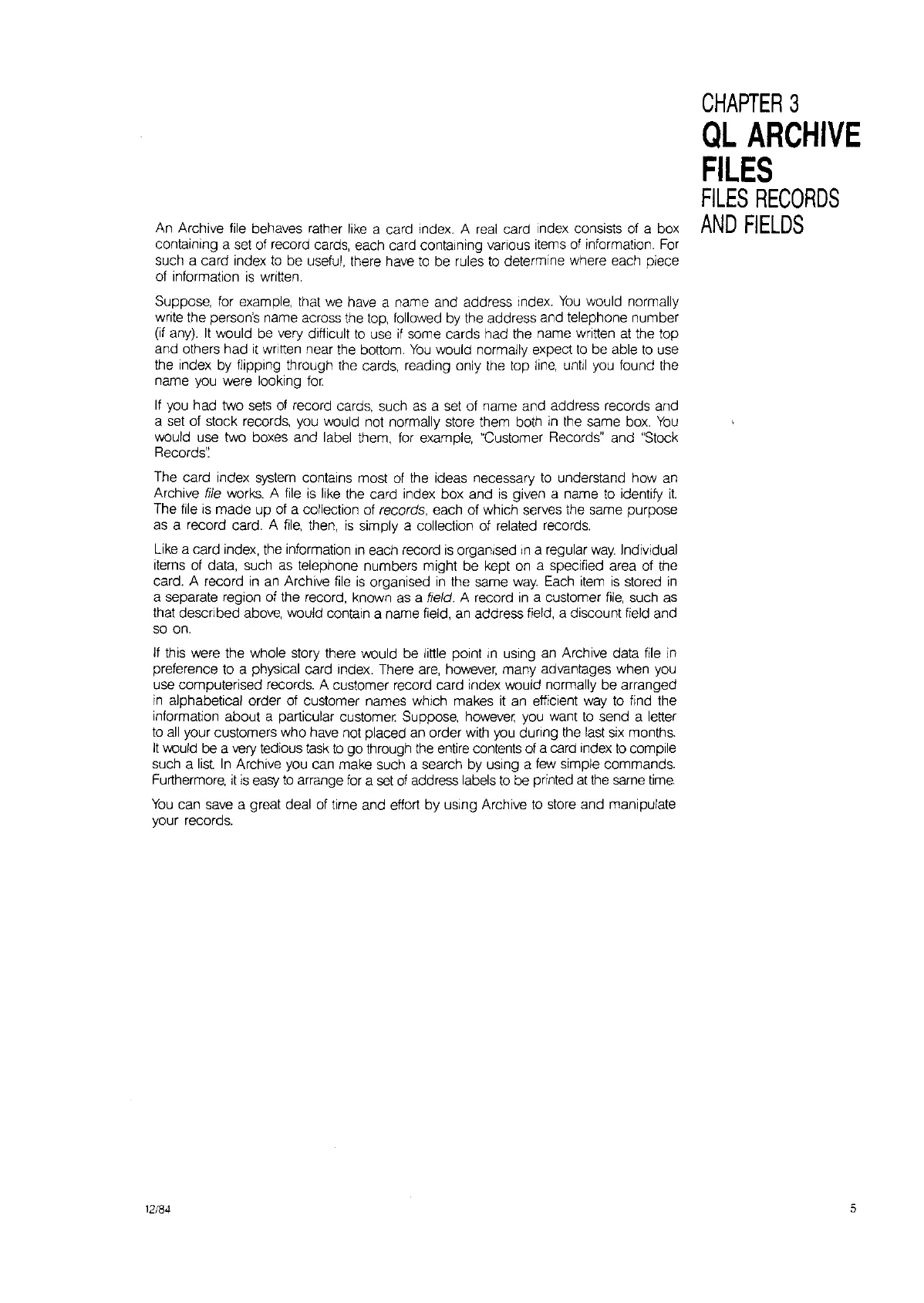An Archive
file
behaves rafher
like
a card index. A
real
card Index consists of a box
containing a set of record cards, each card containing various items of information.
For
such a card index
to
be useful, there have
to
be rules
to
determine where each piece
of information
is
wrltlen.
Suppose, for example, that
we
have a name and address Index.
You
would normally
write the person's name across the
top,
followed by the address and telephone number
(if
any).
It
would be very difficult
to
use
if
some cards had the name writlen
at
the top
and others had
it
wrltlen near the botlom.
You
would normally expect
to
be able
to
use
the index by flipping through the cards, reading only the top
line,
until
you
found the
name you were looking
for.
If
you had two
sets
of
record cards, such
as
a
set
of name and address records and
a set of stock records, you would not normally store them both
In
the same box.
You
would use two boxes and label them, for example, "Customer Records" and "Stock
Records':
The card index
system
contains most
of
the
ideas necessary
to
understand how an
Archive
file
works.
A
file
Is
like
the card index box and
is
given a name
to
identify
it.
The
file
Is
made up of a collection of records, each of which serves the same purpose
as
a record card. A
file,
then,
is
simply a collection of related records.
Like
a card Index, the information
In
each record
is
organised
In
a regular
way.
Individual
items of data, such
as
telephone numbers might be kept
on
a specified area of the
card. A record
in
an
Archive
file
is
organised
in
the same
way.
Each
item
is
stored
in
a separate region of the record, known
as
a field. A record
in
a customer
file,
such
as
that described above, would contain a name field, an address field, a discount field and
so
on.
If
thiS
were the whole story there would be litlle point
In
using an Archive data
file
in
preference
to
a physical card Index. There
are,
however,
many advantages when you
use computerised records. A customer record card index would normally be arranged
in
alphabetical order of customer names which makes
it
an efficient
way
to find the
information about a particular customer. Suppose, however you want
to
send a letler
to
all
your customers who have not placed an order with
you
during the
last
six months.
It
would be a very tedious
task
to
go through
the
entire contents of a card index
to
compile
such a
list.
In
Archive
you
can make such a search by using a
few
simple commands.
Furthermore,
it
Is
easy
to
arrange
for
a
set
of
address labels
to
be
printed
at
the same
time.
You
can save a great deal of time and effort by uSing Archive
to
store and manipulate
your records.
12/84
CHAPTER
3
QL
ARCHIVE
FILES
FILES
RECORDS
AND
FIELDS
5
